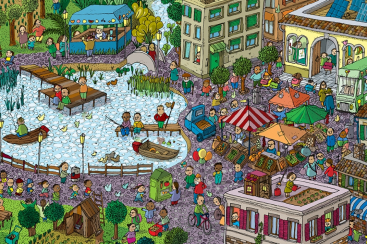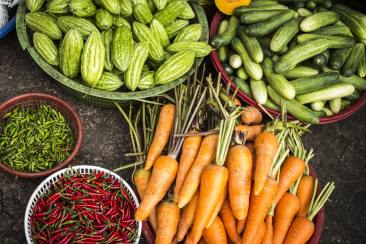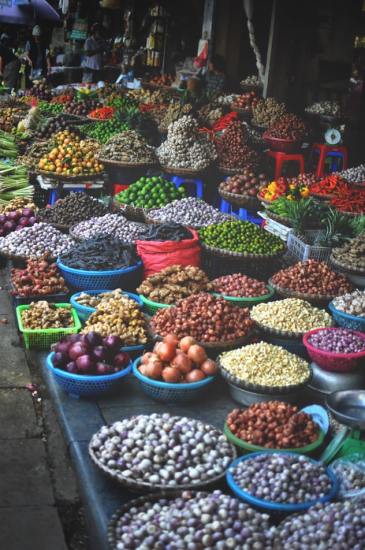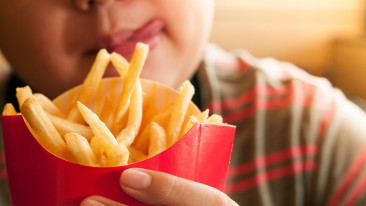Dear Wonderful Kids (& Co.)
TRANSCEND MEMBERS, 5 Aug 2019
Baher Kamal | Human Wrongs Watch – TRANSCEND Media Service
Please read this (and ask your grown-ups to explain and… behave themselves).

‘There’s more to a healthy life than just the food you eat – you also want to drink lots of water and get plenty of exercise. ©FAO’
4 Aug 2019 – It looks like a funny tale. But it is much more than just that—it is about nothing less than your health.
If you, wonderful kids, can read it and understand it by yourselves, that would be really great. Otherwise, ask your parents, aunts, uncles, grandmas or grandpas or your teacher to read it and explain it to you and, by the way, also learn from it.
A world top specialised organisation has just distributed a story with funny sketches. So, the following is based on what the UN Food and Agriculture Organization tells:
Food is important because it gives us the energy and nutrients we need to enjoy healthy and active lives. It is as simple as that we need food to survive.
So, apart from getting enough exercise and drinking enough water, a very important part of being healthy is having a good diet.
And a healthy diet means eating enough nutritious, safe and varied food every day so that you can grow and live an active life (run, play, learn, grow and climb trees).
The food we choose to eat depends on many different things: the time we have to cook or eat it, what’s easiest to eat, what others eat, the occasion, our culture or religion, what we like or dislike, our habits, and our knowledge and cooking skills too.
Now see what you –and everybody—should eat to be healthy and happy:
- Fruits and vegetables give us vitamins, minerals, fibre and natural sugars. You should eat as many seasonal fruit and vegetables as possible every day.
- Cereals are everything made from wheat, rice, oats, maize, barley or other grains. They are called ‘staple’ foods as they are eaten every day. They contain carbohydrates, which are your main source of energy.
- Tubers and plantains include potatoes, yams, sweet potatoes, cassava, and malanga, and they too are a source of carbohydrates, vitamins and minerals. Plantains (like bananas but not very sweet) are also an important staple food in many countries.
- Legumes and nuts are crucial sources of proteins. They come from plants, cost less than other protein-rich foods, are high in fibre, low in fat, and have other key minerals and vitamins.
- Dairy products are all made from milk (cow, goat, sheep, buffalo, camel, yak, horse and even moose) and include milk, cheese, yoghurt, curd, and buttermilk. They have plenty of calcium, protein and fat.
- Meat, fish and eggs contain iron and proteins, which are what make you strong and help to fix your body when you get hurt.
- Fats and oils help our bodies to stay healthy, but only if they’re the right kind. Choose vegetable oils, nut butters and avocado over fats in meat, butter, cream, or palm oil, and avoid fried or processed foods high in unhealthy fats.
You, your parents, your teachers, friends and anyone you know can do something to make sure you (and they) eat a healthy diet and enjoy a healthy life.
Here are just a few tips on how to start changing your eating habits:
- Follow the one-third veg (vegetarian) rule – Try filling a third of your plate with veggies (vegetables) each meal, or maybe eating an all-veggie meal once a week. Focus on eating fresh fruits and vegetables, especially those that are grown locally and organically.
- Help out in the kitchen – Watch and learn as your parents cook meals, and offer to help in the kitchen when you see that they’re tired. There are plenty of easy, quick and healthy recipes on the internet to inspire you.
- Go with your parents to your local markets and ask them to buy local, seasonal fruit and vegetables and to choose fresh over preserved or tinned foods. Did you know? Organic farming helps our soils to stay healthy!
- Get involved at school – Good nutrition doesn’t stop at home. If you have a school cafeteria or vending machine, look at the food they provide and see if there are enough fruits and vegetables. If not, talk to your teachers about changing the food choices.
- Be a critical consumer – Take time to read the list of ingredients on a label and try to identify those that aren’t good for you. You need to pay attention to the nutritious value of food, not what it looks like, or how cool the packaging is. And look out for words like ‘zero’, ‘low in’ and ‘light’. They’re often used to make food sound healthier, and it isn’t always true! Don’t let the packaging fool you!
And now a good, healthy game if you feel like wanting to participate: if you are between 5-19 years old, design a poster and enter the World Food Day Poster Contest by 8 November 2019!
Otherwise…
Please give it a try, say, for a couple of weeks … or many more. It will help you, and very much, to grow up healthy, run, play, and be happy.
We all know that “fast-food’ is just that: fast. And that it may taste well to many kids and even grown-ups. But there is a BUT.
And that BUT is obesity. Or at least be fatty, with a bigger weight than you should have.
Apart from not looking nice, obesity and overweight create serious health problems: you feel tired; less able to play, run, jump; breathing may become heavy; you may not sleep well, etc. And you cannot always dress with the clothes you most like as you would need a special size.
Here, an organisation that knows much about health—the World Health Organization has studied these problems. The following is based on what it says:
What causes obesity and overweight?
To start with, they are due to eating ‘energy-dense’ food, with much or too much fat. Another reason is lack of physical activity, this depending in many cases on the first cause, at least in the case of kids and youngsters.
The result is there were as many as 340 million children and adolescents aged 5-19 who were overweight or obese in 2016.
Not only, the problems of overweight and obesity among children and adolescents aged 5-19 has risen dramatically from just 4 per cent in 1975 to over 18 per cent in 2016.
The rise has happened among both boys and girls. For instance, in 2016 18 per cent of girls and 19 per cent of boys were overweight.
Want to know more? Well, while just under 1 per cent of children and adolescents aged 5-19 were obese in 1975, more than 124 million children and adolescents (6 per cent of girls and 8 per cent of boys) were obese in 2016.
And what is even worse, much worse: overweight and obesity are linked to more deaths worldwide than underweight.
What to do?
- eat less food with much fats and sugars;
- eat more fruit and vegetables, legumes, whole grains and nuts; and
- make regular physical activity (60 minutes a day for children and 150 minutes spread through the week for adults).
To end, just a couple of stories you may wish to read… and ask grown-ups to read:
and
Worth being healthy and happy, don’t you think so?
_____________________________________________
 Baher Kamal, a member of the TRANSCEND Network for Peace Development Environment, is an Egyptian-born, Spanish national, secular journalist, with over 45 years of professional experience — from reporter to special envoy to chief editor of national dailies and an international news agency. Baher is former Senior Advisor to the Director General of the international news agency IPS (Inter Press Service) and he also contributed to prestigious magazines such as TRANSCEND Media Service, GEO, Muy Interesante, and Natura, Spain. He is also publisher and editor of Human Wrongs Watch.
Baher Kamal, a member of the TRANSCEND Network for Peace Development Environment, is an Egyptian-born, Spanish national, secular journalist, with over 45 years of professional experience — from reporter to special envoy to chief editor of national dailies and an international news agency. Baher is former Senior Advisor to the Director General of the international news agency IPS (Inter Press Service) and he also contributed to prestigious magazines such as TRANSCEND Media Service, GEO, Muy Interesante, and Natura, Spain. He is also publisher and editor of Human Wrongs Watch.
Go to Original – human-wrongs-watch.net
Tags: Agri-food, Culture, Health, Junk Food, Nonviolence, Organic food, Public Health, Solutions, Veganism, Vegetarianism
DISCLAIMER: The statements, views and opinions expressed in pieces republished here are solely those of the authors and do not necessarily represent those of TMS. In accordance with title 17 U.S.C. section 107, this material is distributed without profit to those who have expressed a prior interest in receiving the included information for research and educational purposes. TMS has no affiliation whatsoever with the originator of this article nor is TMS endorsed or sponsored by the originator. “GO TO ORIGINAL” links are provided as a convenience to our readers and allow for verification of authenticity. However, as originating pages are often updated by their originating host sites, the versions posted may not match the versions our readers view when clicking the “GO TO ORIGINAL” links. This site contains copyrighted material the use of which has not always been specifically authorized by the copyright owner. We are making such material available in our efforts to advance understanding of environmental, political, human rights, economic, democracy, scientific, and social justice issues, etc. We believe this constitutes a ‘fair use’ of any such copyrighted material as provided for in section 107 of the US Copyright Law. In accordance with Title 17 U.S.C. Section 107, the material on this site is distributed without profit to those who have expressed a prior interest in receiving the included information for research and educational purposes. For more information go to: http://www.law.cornell.edu/uscode/17/107.shtml. If you wish to use copyrighted material from this site for purposes of your own that go beyond ‘fair use’, you must obtain permission from the copyright owner.



